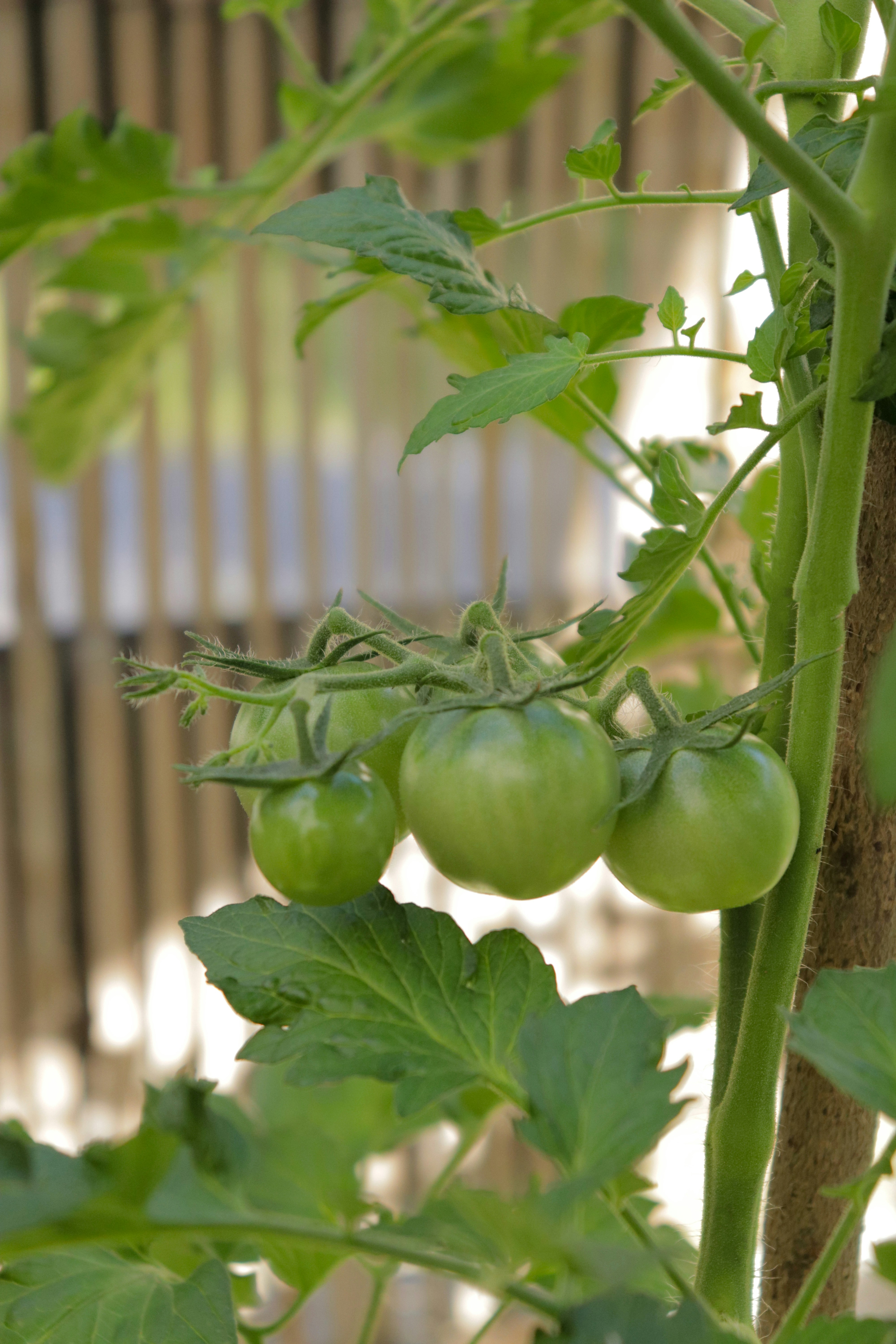
How to Make Homegrown Tomatoes Turn Red
Have you ever found yourself eagerly waiting for your homegrown tomatoes to turn that perfect shade of red, only to find them stubbornly lingering in their green state? If so, you’re not alone! Tomatoes can be surprisingly tricky when it comes to ripening. But don’t worry—getting your tomatoes to turn red is easier than you might think, and with a few key techniques, you’ll be harvesting vibrant, juicy, red tomatoes in no time.
In this comprehensive guide, we’ll explore everything you need to know to help your tomatoes ripen to perfection. Whether you’re growing them in a garden, on a balcony, or in containers, these tips will ensure your tomatoes reach their full potential. Let’s get started!
Understanding Tomato Ripening
Before we jump into the how-tos, it’s essential to understand why tomatoes ripen the way they do. Tomato ripening is a complex process that involves the breakdown of chlorophyll (which gives tomatoes their green color) and the production of ethylene gas, a natural plant hormone that triggers the ripening process.

As tomatoes ripen, they undergo several changes:
- Color: The green chlorophyll breaks down, and the tomato begins to turn red, orange, yellow, or even purple, depending on the variety.
- Texture: Tomatoes soften as they ripen, becoming juicier and more tender.
- Flavor: The sugars and acids in the tomato develop, giving it that delicious, balanced taste.
Tomatoes typically start ripening on the vine, but factors like weather, plant health, and even the variety of tomato can influence the process. Now that we know what’s happening inside those green fruits, let’s look at how you can encourage them to turn red.
Choosing the Right Tomato Varieties
The first step in ensuring your tomatoes turn red is choosing the right variety. Not all tomatoes are destined to turn red—some ripen to yellow, orange, or even purple. If you’re specifically looking for red tomatoes, make sure to select varieties known for their red color.
Popular Red Tomato Varieties:
- ‘Beefsteak’: Known for its large size and juicy texture, Beefsteak tomatoes are a classic red variety.
- ‘Roma’: Often used in sauces, Roma tomatoes are small, oval-shaped, and turn a deep red when ripe.
- ‘Early Girl’: This variety is an excellent choice for gardeners in cooler climates, as it ripens early in the season.
- ‘Cherry’: These bite-sized tomatoes are perfect for salads and ripen to a bright red.
- ‘Celebrity’: A popular hybrid variety that produces medium-sized, red tomatoes with good flavor.
Choosing a variety that suits your climate and growing conditions will set you up for success from the start.

Providing Optimal Growing Conditions
Tomatoes are sun-loving plants that thrive in warm weather. Ensuring they have the right conditions from the beginning will help them ripen properly.
Sunlight and Temperature
Tomatoes need plenty of sunlight to ripen. Ideally, they should receive 6-8 hours of direct sunlight each day. The more sunlight they get, the more energy they have to convert chlorophyll into red pigments.
Temperature is also crucial:
- Ideal Range: Tomatoes ripen best in temperatures between 70°F and 85°F (21°C to 29°C).
- Too Hot or Too Cold: If temperatures consistently exceed 90°F (32°C), ripening can slow down or stop altogether. Similarly, temperatures below 55°F (13°C) can also inhibit ripening.
Watering Practices
Consistent watering is essential for tomato ripening. Fluctuations in moisture can cause issues like splitting or blossom-end rot, which can delay ripening or spoil the fruit altogether.
- Water Deeply: Water deeply and consistently, keeping the soil moist but not waterlogged.
- Avoid Watering the Leaves: Water at the base of the plant to prevent fungal diseases that can interfere with the ripening process.
- Mulch: Use mulch to help retain moisture and maintain an even soil temperature.

Fertilization
Proper nutrition is key to healthy tomato plants that produce ripe fruit. However, it’s important not to over-fertilize, especially with nitrogen, as this can lead to lush foliage at the expense of fruit ripening.
- Balanced Fertilizer: Use a balanced fertilizer that provides essential nutrients without overwhelming the plants with nitrogen.
- Phosphorus and Potassium: These nutrients support flower and fruit development, helping tomatoes ripen more efficiently.
Pruning and Plant Maintenance
Healthy plants produce the best fruit, and a little maintenance goes a long way in ensuring your tomatoes ripen to their full potential.
Pruning for Better Air Circulation
Pruning helps improve air circulation, allowing more sunlight to reach the fruit and reducing the risk of disease.
- Remove Suckers: These are small shoots that grow in the crotch between the stem and a branch. Removing them helps the plant focus its energy on ripening fruit rather than growing foliage.
- Trim Lower Leaves: As tomatoes start to ripen, consider trimming some of the lower leaves to improve air circulation and reduce the risk of soil-borne diseases.
Managing Pests and Diseases
Healthy plants ripen fruit more effectively, so it’s important to keep pests and diseases at bay.
- Regular Monitoring: Check your plants regularly for signs of pests like aphids or diseases like blight. Early intervention can prevent minor problems from becoming major issues that disrupt ripening.
- Organic Solutions: Use organic pesticides or companion planting to keep harmful insects away. For example, planting basil near tomatoes can help repel aphids.

Encouraging Ripening on the Vine
Sometimes, tomatoes need a little extra help to ripen on the vine. Here are some techniques to encourage them to turn red:
Stress the Plant (But Not Too Much)
A little stress can sometimes prompt tomatoes to ripen faster. Reducing water slightly or trimming back some leaves can signal to the plant that it’s time to focus on fruit production. However, be careful not to stress the plant too much, as this can have the opposite effect.
Pinch Off Flowers
As the growing season winds down, pinch off any new flowers. This encourages the plant to focus its energy on ripening the existing fruit rather than producing more flowers that won’t have time to develop.
Prune Late-Season Fruits
If you have a lot of green tomatoes late in the season, consider pruning some of the smaller or less developed fruits. This will allow the plant to concentrate its energy on ripening the remaining tomatoes.
Ripening Tomatoes Indoors
If the growing season is coming to an end and you still have green tomatoes on the vine, don’t worry! You can ripen them indoors with a few simple techniques.
Picking Green Tomatoes
First, pick your green tomatoes before the first frost. Look for tomatoes that have started to show a slight blush of color, as these will ripen more successfully indoors.
Use a Warm, Dry Place
Place the tomatoes in a warm, dry area such as a windowsill, countertop, or even inside a cardboard box.
Paper Bag Method
For quicker ripening, place the tomatoes in a paper bag with a banana or apple. These fruits release ethylene gas, which speeds up the ripening process. Check the tomatoes daily and remove any that have ripened to prevent overripening.
Hanging the Plants
If you have a lot of green tomatoes, you can uproot the entire plant and hang it upside down in a warm, dry location. The tomatoes will continue to ripen on the vine.
What to Do with Green Tomatoes
If you find yourself with green tomatoes that refuse to ripen, don’t toss them out! Green tomatoes can be used in a variety of recipes, from fried green tomatoes to pickles and chutneys.

Common Ripening Problems and Solutions
Even with the best care, sometimes tomatoes can be stubborn about ripening. Here are some common issues and how to address them:
Problem: Tomatoes Stay Green
If your tomatoes are staying green despite your efforts, the issue may be with temperature or light.
- Solution: Ensure the plants are getting enough sunlight and that temperatures are within the ideal range. If it’s too hot or too cold, consider ripening them indoors.
Problem: Uneven Ripening
Sometimes tomatoes ripen unevenly, with one side turning red while the other remains green.
- Solution: This is often caused by uneven sunlight exposure. Rotate the tomatoes or prune surrounding leaves to ensure even light distribution.
Problem: Blossom-End Rot
Blossom-end rot is a common problem that causes the bottom of the tomato to rot before it ripens.
- Solution: This is usually caused by inconsistent watering or calcium deficiency. Maintain consistent soil moisture and consider adding calcium to the soil.
Problem: Cracking or Splitting
Cracked or split tomatoes can be caused by fluctuations in moisture, particularly if the tomatoes are watered irregularly.
- Solution: Water consistently and use mulch to maintain even soil moisture.
Enjoying Your Red, Ripe Tomatoes
There’s nothing quite like the taste of a perfectly ripe, homegrown tomato. By understanding the ripening process and providing the right conditions, you can ensure your tomatoes turn that beautiful shade of red, ready to be enjoyed in your favorite dishes.
Remember, patience is key when it comes to ripening tomatoes. Sometimes, the process takes a bit longer than expected, but with these tips in hand, you’ll be well on your way to a bountiful harvest of red, juicy tomatoes that are bursting with flavor.
So, are you ready to turn your green tomatoes red? With these strategies, you’ll be able to enjoy the fruits of your labor in no time.



